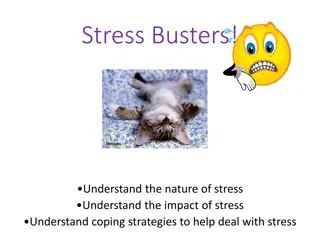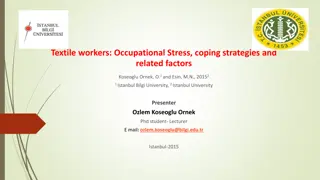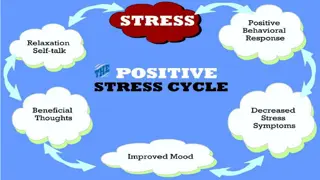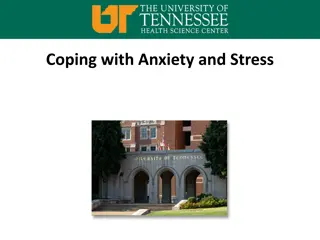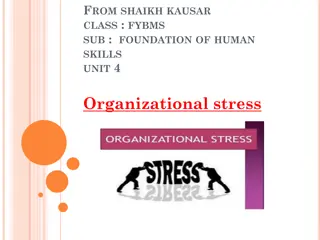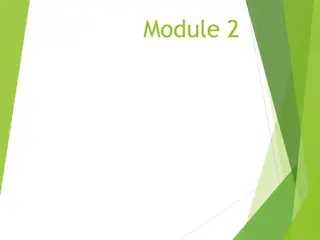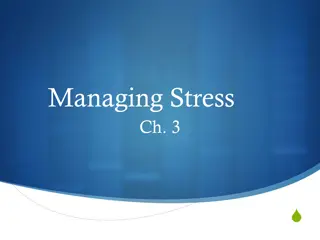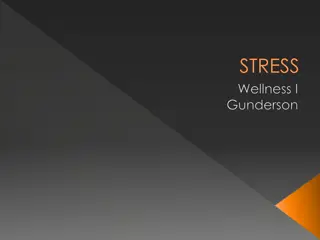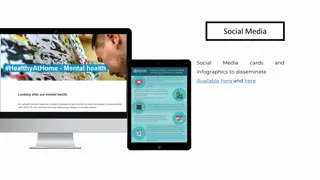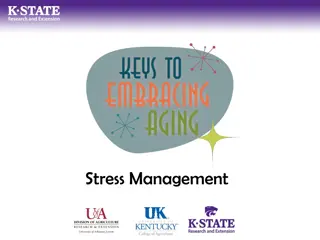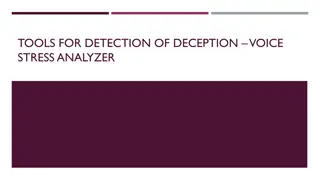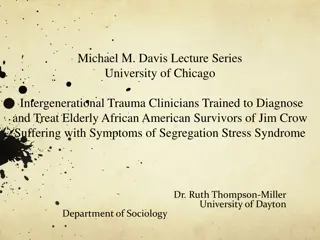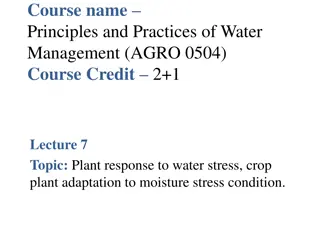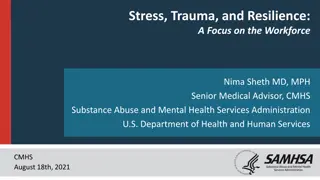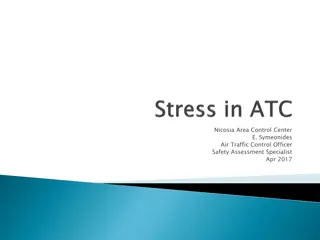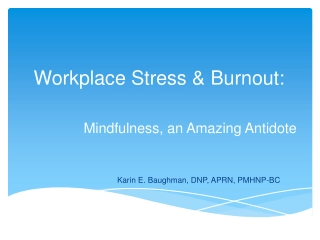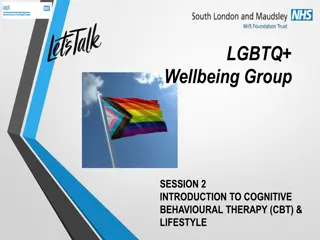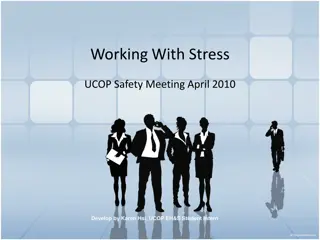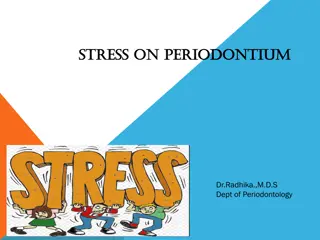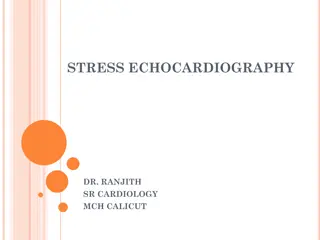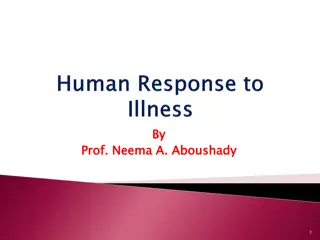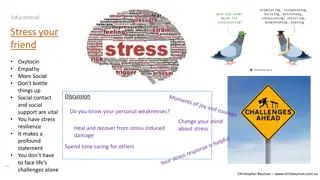Understanding Stress in Women: Causes, Symptoms, and Coping Strategies
Stress is a common experience for women, stemming from various roles and responsibilities in today's society. This stress can manifest physically, emotionally, and mentally, leading to symptoms like headaches, anxiety, and worry. Factors such as family obligations, caregiving, and work responsibilities contribute to stress in women. Coping strategies are essential to manage stress and prevent negative impacts on overall well-being.
Download Presentation

Please find below an Image/Link to download the presentation.
The content on the website is provided AS IS for your information and personal use only. It may not be sold, licensed, or shared on other websites without obtaining consent from the author. Download presentation by click this link. If you encounter any issues during the download, it is possible that the publisher has removed the file from their server.
E N D
Presentation Transcript
WOMAN STRESS & PTDS PROF. DR. RABEA M. ALI
What is stress? Stress is the body s response to the daily events that occur in the life. Everyone experiences stress. Stress can be positive and motivate women to achieve notable goals. But stress can also be negative and destructive, taking its toll in many life areas.
What are the symptoms of stress? 1. Physical: Headaches, difficulty sleeping, tiredness, pain (most commonly in the back and neck), less interest in sex/other things used to enjoy. 2. Emotional. Anxiety, depression, anger, unhappiness 3. Mental: worry, can t make decisions, negative thinking, lack of focus.
Occupational. poor concentration, unfulfilling job. Social. Less intimacy, isolation, family problems.
What causes some of the stress seen in women? In today s society, women s roles often include family obligations, caregiving for children and/or elderly parent (statistically more likely to be a woman) and work responsibilities as well as other roles.
As demands increase to fulfill these roles, women can feel overwhelmed with time pressures and unmet obligations. They may feel a sense of failure in not being able to meet expectations for themselves and others. Oftentimes women spend more time meeting the needs of others rather than nurturing their own needs. If functioning at high stress levels, women may not even recognize what their needs are.
Type of stress Physical stress: trauma (injury, infection, surgery), intense physical labor/over-exertion, environmental pollution , illness (viral, bacterial, or fungal agents), fatigue, inadequate oxygen supply, hypoglycemia I(low blood sugar), hormonal and/or biochemical imbalances, dietary stress etc.. emotional stress, cognitive Psychological stress: stress relationship/marriage difficulties ,lack of social support.
Behavioral: Avoidance of tasks; sleep problems; difficulty in completing work assignments; tremors; strained face; clenching fists; crying; changes in drinking, eating, or smoking behaviors. Social: Some people in stressful times tend to seek out others to be with. Other people withdraw under stress. Also, the quality of relationships can change when a person is under stress
How does stress affect a womans health? Depression and anxiety: Heart problems. Stress increases blood pressure and heart rate. Headaches and migraines. Tension headaches are more common in women than men.
Obesity. Women are more prone to stress-related weight gain than men. Bowel problems. Stress can lead to such bowel problems as irritable bowel syndrome. Pregnancy issues. Women with higher stress levels have a more difficult time becoming pregnant than women with lower stress levels. Menstrual problems. Premenstrual syndrome is more severe with increasing stress levels.
How can women better manage stress? Physical. Exercise, practice relaxation techniques (yoga, meditation, listen to relaxing music), eat healthy (for example, follow the Mediterranean diet), schedule leisure time, get enough sleep (7 to 9 hours/night). Express emotions, repeat positive Emotional. emotions, work toward a healthy self-esteem. Mental. Have a positive outlook, realistic thinking, be creative.
Occupational. Establish doable goals, identify home-work balance, set limits. Social. Strive to maintain loving relationships, establish healthy boundaries, stay connected with friends. Spiritual. Find the meaning/purpose, focus on gratitude, stay in the present moment
PTSD, or posttraumatic stress disorder: is a set of reactions that can occur after someone has been through a traumatic event. The chance of developing PTSD depends on the type of event experienced, but about 5 to 10% of Australians will suffer from PTSD at some point in their lives.
The main symptoms of PTSD are: Re-living the traumatic event through distressing, unwanted memories, vivid nightmares and/or flashbacks. This can also include feeling very upset or having intense physical reactions such as heart palpitations or being unable to breathe when reminded of the traumatic event.
Avoiding reminders of the traumatic including activities, places, people, event, thoughts or feelings that bring back memories of the trauma. Negative thoughts and feelings such as fear, anger, guilt, or feeling flat or numb a lot of the time. A person might blame themselves or others for what happened during or after the traumatic event, feel cut-off from friends and family, or lose interest in day-to-day activities.
Feeling wound-up. This might mean having trouble sleeping or concentrating, feeling angry or irritable, taking risks, being easily startled, and/or being constantly on the lookout for danger.
Changes in physical and emotional reactions Being easily startled or frightened Always being on guard for danger Self-destructive behavior, such as drinking too much or driving too fast Trouble sleeping Trouble concentrating Irritability, angry outbursts or aggressive behavior Overwhelming guilt or shame`
Causes Stressful experiences, including the amount and severity of trauma have gone through life Inherited mental health risks, such as a family history of anxiety and depression Inherited features of the personality often called the temperament The way the brain regulates the chemicals and hormones that body releases in response to stress
Risk factors: Experiencing intense or long-lasting trauma Having experienced other trauma earlier in life, such as childhood abuse Having a job that increases the risk of being exposed to traumatic events, such as military personnel and first responders
Having other mental health problems, such as anxiety or depression Having problems with substance misuse, such as excess drinking or drug use Lacking a good support system of family and friends Having blood relatives problems, including anxiety or depression with mental health
To diagnose post-traumatic stress disorder, the doctor will likely: Perform a physical exam to check for medical problems that may be causing the symptoms Do a psychological evaluation that includes a discussion of the signs and symptoms and the event or events that led up to them Use the criteria in the Diagnostic and Statistical Manual of Mental Disorders (DSM-5), published by the American Psychiatric Association
Treatment Psychotherapy(Cognitive therapy, behavioral therapy , Medications( antidepressant, antianxiety)



